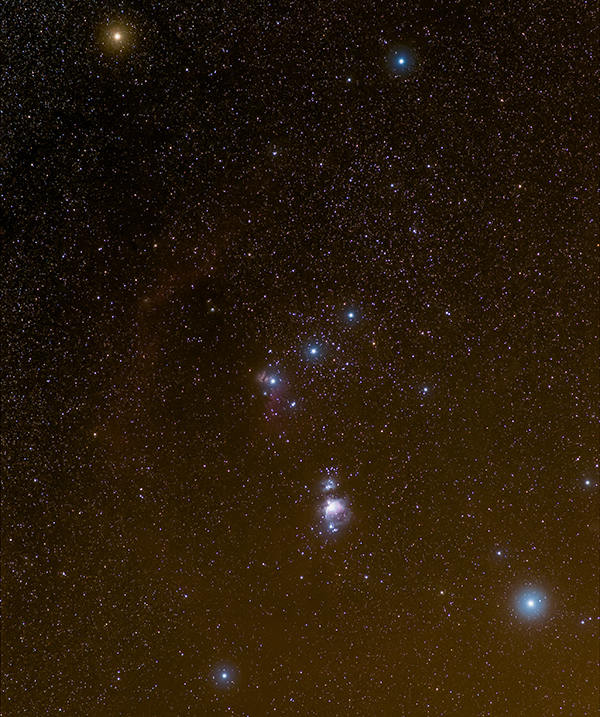Orion is one of the most conspicuous and recognizable constellations in the night sky. It was named after Orion, a hunter in Greek mythology. Its brightest stars are Rigel (Beta Orionis) and Betelgeuse (Alpha Orionis), a blue-white and a red supergiant, respectively.
Hanging from Orion’s belt is his sword which contains the Orion Nebula, also known as M42. This is a spectacular object that can be clearly identified with the naked eye as something other than a star. It is one of the most easily photographed Deep Sky Objects and can be captured by most modern digital cameras.
The first image of Orion was taken last winter on an evening with a very thin layer of high clouds. This cloudiness was enough to cause a beautiful glow around the brighter stars in the constellation. Some nebulosity is visible in both the belt and sword of Orion. (Nikon D700, ISO 1600, f/5.6, 120 seconds, 80mm).

The second image was taken this spring (Nikon D700, ISO 1600, f/4, 10x120s, 200mm) and is zoomed/cropped on the Orion Nebula (M42).

I recently heard someone say that a reasonable goal of astrophotography is not so much to produce the best image, but to produce a better image than your previous best. In this case, I can claim some success.
And, for comparisons sake, here is a richly detailed image of the Orion Nebula captured by the Hubble Telescope and posted on the Astronomy Photo of the Day (APOD) site.